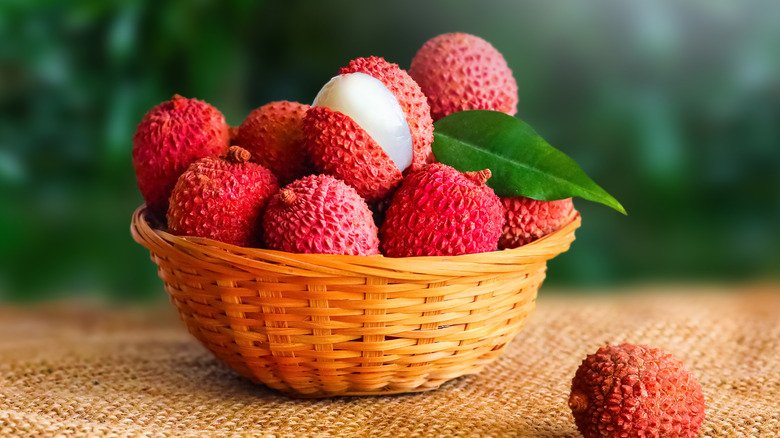India Becomes the Leading Exporter of Litchis in the World
India’s Achievement in Litchi Export
India has achieved a significant milestone by becoming the world’s largest exporter of litchis. This tropical fruit, known for its unique flavor and nutritional benefits, has gained popularity in global markets, boosting India’s agricultural export portfolio. The country’s favorable climate, advanced farming techniques, and government support have contributed to this achievement, positioning India at the forefront of litchi production and export.
Government Initiatives and Support
The Indian government has played a crucial role in supporting litchi farmers and exporters. Various schemes and policies have been implemented to enhance the production and export quality of litchis. Initiatives like the Agricultural and Processed Food Products Export Development Authority (APEDA) have provided necessary infrastructure and financial assistance to farmers. These measures have not only increased production but also ensured that Indian litchis meet international standards.
Impact on Farmers and Economy
The rise in litchi exports has positively impacted the lives of many farmers across India. Regions such as Bihar, West Bengal, and Tripura, which are major litchi-producing areas, have seen significant economic benefits. Increased demand for litchis in international markets has led to better prices and improved living standards for farmers. This growth in the agricultural sector has also contributed to the overall economy, generating employment and boosting rural development.
Challenges and Future Prospects
Despite the success, the litchi export sector faces several challenges, including competition from other countries, climate change, and pest infestations. However, continuous efforts in research and development, coupled with government support, are expected to mitigate these challenges. The future prospects for litchi exports look promising, with plans to explore new markets and enhance production techniques further.
Global Market Dynamics
India’s dominance in the litchi export market is a testament to its ability to adapt and meet global demands. The country’s main competitors in the global market include Thailand and Vietnam. However, India’s strategic marketing, superior quality produce, and consistent supply have given it an edge. By maintaining high standards and exploring innovative farming practices, India is set to retain its position as the leading exporter of litchis.

Why This News is Important
Boost to Indian Agriculture
This news is significant because it highlights the growth and potential of India’s agricultural sector. Achieving the status of the largest exporter of litchis not only showcases India’s farming capabilities but also underscores the effectiveness of government policies aimed at boosting agricultural exports.
Economic Impact
The increase in litchi exports has direct economic implications. It enhances the income of farmers, particularly in litchi-growing regions, thereby improving their quality of life. The revenue generated from exports contributes to the national economy, supporting rural development and creating job opportunities.
Global Recognition
India’s achievement in becoming the leading exporter of litchis brings global recognition to the country’s agricultural products. This not only opens doors for other Indian fruits and vegetables in international markets but also strengthens India’s position in global trade.
Sustainable Agriculture Practices
The focus on litchi exports promotes sustainable agriculture practices. Farmers are encouraged to adopt environmentally friendly farming techniques to meet international standards. This shift towards sustainability ensures the long-term health of the agriculture sector.
Encouragement for Diversification
This milestone encourages farmers and exporters to diversify their crops and explore new markets. Diversification reduces dependency on a single crop, mitigates risks, and promotes the overall resilience of the agricultural sector.
Historical Context: The Journey of Litchi Cultivation in India
Introduction of Litchi in India
Litchi was introduced to India from China in the late 19th century. It quickly adapted to the Indian climate, especially in the northeastern states and Bihar. Over the years, litchi cultivation spread to other parts of the country, becoming a major fruit crop.
Development of Cultivation Techniques
Significant advancements in cultivation techniques have been made since the introduction of litchi. Research institutions and agricultural universities have developed high-yield and disease-resistant varieties. Improved irrigation methods and pest control measures have also contributed to increased production.
Government Support and Policies
The Indian government has consistently supported litchi cultivation through various schemes and subsidies. The establishment of APEDA and other agricultural bodies has provided the necessary infrastructure and financial backing to farmers, facilitating growth in production and exports.
Expansion into Global Markets
India began exporting litchis in the early 2000s. Over the years, continuous improvements in quality control and adherence to international standards have helped Indian litchis gain a strong foothold in global markets. The country’s strategic marketing and branding efforts have further boosted its export potential.
Current Status and Achievements
Today, India stands as the world’s largest exporter of litchis. This achievement is a result of decades of hard work, innovation, and government support. Indian litchis are now known for their superior quality and taste, making them a preferred choice in many countries.
Key Takeaways from “India Becomes the Leading Exporter of Litchis in the World”
| Serial Number | Key Takeaway |
|---|---|
| 1 | India has become the world’s largest exporter of litchis. |
| 2 | Government initiatives and support have significantly boosted litchi production and exports. |
| 3 | The economic impact of increased litchi exports has improved the livelihoods of farmers. |
| 4 | India faces challenges such as climate change and competition but continues to innovate and improve. |
| 5 | Global recognition of Indian litchis enhances the country’s position in international markets. |
Important FAQs for Students from this News
1. How did India become the largest exporter of litchis?
India became the largest exporter of litchis due to its favorable climate, advanced farming techniques, and government support. Initiatives like the Agricultural and Processed Food Products Export Development Authority (APEDA) have played a significant role in enhancing the quality and quantity of litchis produced and exported.
2. Which regions in India are the major producers of litchis?
The major litchi-producing regions in India are Bihar, West Bengal, and Tripura. These areas have the ideal climate and soil conditions for litchi cultivation.
3. What government initiatives have supported litchi exports?
The Indian government has implemented various schemes and policies, including subsidies, financial assistance, and infrastructure development through bodies like APEDA, to support litchi farmers and exporters.
4. What are the challenges faced by the litchi export sector in India?
The litchi export sector in India faces challenges such as competition from other countries, climate change, and pest infestations. Continuous research and development efforts are being made to address these issues.
5. Why is litchi export important for India’s economy?
Litchi export is important for India’s economy as it enhances farmers’ incomes, supports rural development, creates job opportunities, and contributes to the national economy through increased agricultural exports.
Some Important Current Affairs Links

















